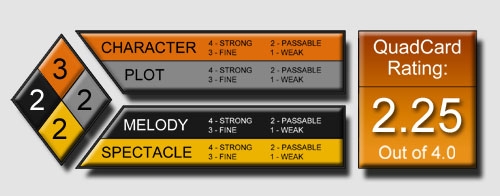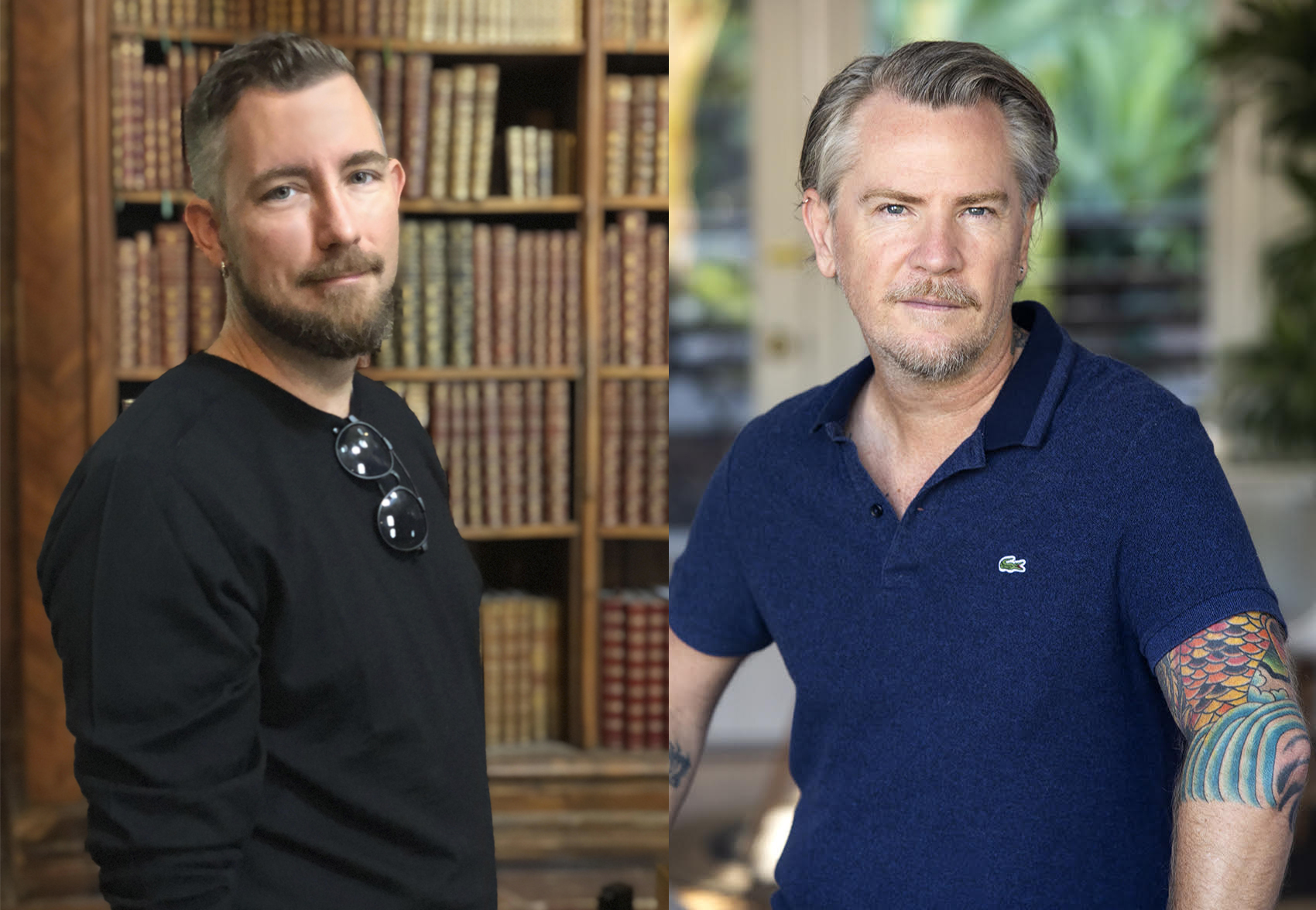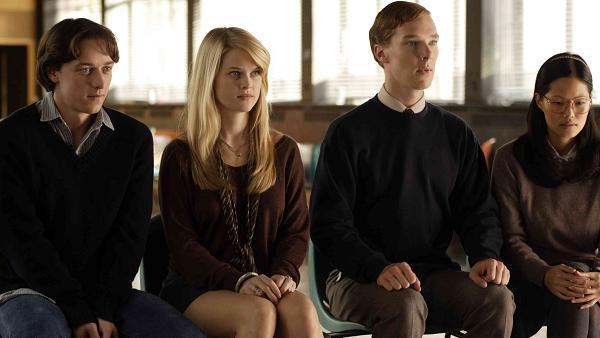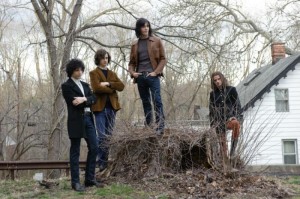
I left my recollection of David Chase’s Not Fade Away in the theater shortly after walking out during the credits. Maybe that sounds like bad news, and maybe I’m putting myself in a hole by starting off my review on that note, but truthfully, memorability happens to be Not Fade Away‘s biggest Achilles’ heel. Chase hasn’t made a bad film, not by any stretch of the means, but he’s made one that suffers from diminishing returns, one which our connection to slackens and grows hazier the longer that the picture runs. He’s also made a picture about listless, directionless youth; appropriately, Not Fade Away meanders and lazes as much as its principals and supporting characters do.
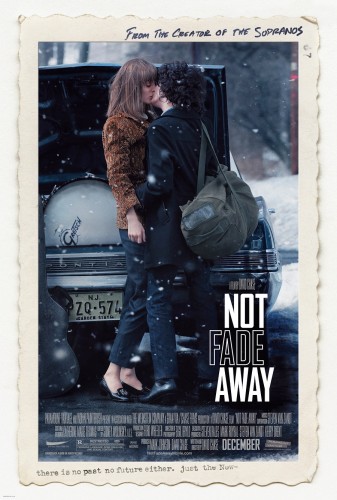 I can admire the reflexivity from a distance, but up close it’s a detriment. Were these teens anything other than entitled, ignorant, and self-centered, their sustained company might be pleasurable, but they wear out their welcome with due speed. Rebellion here makes sense; Douglas (John Magaro), our leading man for lack of a better term, lives a working class life in the suburbs of 1960s New Jersey, where he dwells with his neurotic mother and bullying father. To one one’s surprise, dear old dad happens to be portrayed by James Gandolfini, and they both play to the most popular stereotypes about Italian Americans in the cinematic lexicon. It’s not hard to wonder why Douglas acts so churlish around them and even with the people he identifies as his friends.
I can admire the reflexivity from a distance, but up close it’s a detriment. Were these teens anything other than entitled, ignorant, and self-centered, their sustained company might be pleasurable, but they wear out their welcome with due speed. Rebellion here makes sense; Douglas (John Magaro), our leading man for lack of a better term, lives a working class life in the suburbs of 1960s New Jersey, where he dwells with his neurotic mother and bullying father. To one one’s surprise, dear old dad happens to be portrayed by James Gandolfini, and they both play to the most popular stereotypes about Italian Americans in the cinematic lexicon. It’s not hard to wonder why Douglas acts so churlish around them and even with the people he identifies as his friends.
But for as much as we understand Douglas, he’s impossible to like. He’s defined too much by bellicosity and petulance, hallmarks of the teenage spirit that act like anchors for films relying on that adolescent essence as their center; very good pictures, like 2010’s Animal Kingdom (and even this year’s Brave), can make that belligerence work in their favor. Not Fade Away doesn’t figure that magic formula out for itself, and no matter how much potential sympathy Douglas has on his side– his home life leaves a lot to be desired, he’s an underdog in the art of romance, he has dreams of rock and roll stardom– he never has us. As he does with most of his co-stars, he pushes us away with his youthful arrogance and stupidity.
It’s the same story for the rest of his friends, few of whom receive names or even much by way of character; they’re mostly just incidentals in the sprawling faux-plot Chase has cobbled together here. In fact, the secondaries here receive so little development that when Not Fade Away focuses on them sans the presence of Douglas, our anchoring figure, there’s an impression that we’re watching a completely different picture that’s somehow been spliced into Chase’s. Ostensibly, we should care about the ways in which these kids interact with each other; they’re band mates, brothers-in-musical-arms, and in a subplot that ends up going nowhere they’re also nearly all attracted to the same girl (Bella Heathcote, given more to do here than in Tim Burton’s abysmal Dark Shadows from earlier this year). Yet we gain no familiarity with them, and they remain strangers until the very end.
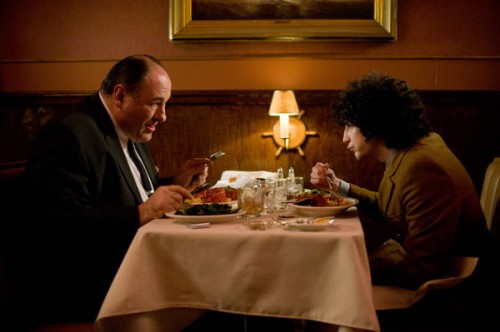
Someone out there likely has some manner of thematic read on our fleeting relationships with these characters, but the real subtext here has a basis in television. Should Not Fade Away been a movie? As the narrative, such as it is, grinds forward and time passes in the most stilted ways possible, one can’t help but feel that all of this would have worked better in a smaller format. Maybe it’s unfair to pigeonhole Chase based on his success in home media platforms, but Not Fade Away feels like a distant cousin to shows like Mad Men, period dramas intended for a long-form rather than short-form medium.
Not Fade Away isn’t a text that fits into the constraints of a one-shot hour and forty minute running time. As Douglas grows, heads off to college, becomes the figurehead of his band, falls in and out of love, and sojourns to California to make his fortune, Not Fade Away reveals itself as a better fit for the boob tube than the silver screen. We’re missing information. We’re missing character beats. None of the absent data renders Not Fade Away incoherent, but it makes it feel compressed. There’s a tale worth telling here, but Chase doesn’t have the luxury of time required to tell it properly.
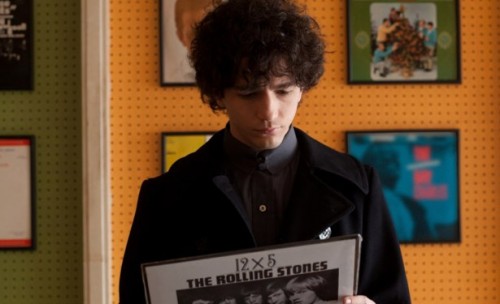
So the film becomes frustrating as it desperately lurches from one moment to the next in an effort to stuff everything Chase has in mind into its episodic frame. He winks and nudges us too much, smirking knowingly at events of the past which we have the long view of in 2012; it’s time capsule storytelling, the kind of sloppy narrative approach that tries to find meaning and humor by smugly glancing over our shoulders at a bygone period. Has Chase really been knocking the idea of Not Fade Away around since finishing The Sopranos? Maybe there’s something to be said for knowing when to put a passion project to rest instead of forcing it to screens long past its expiration date.
G-S-T RULING:
The experience isn’t all bad; if Chase’s alleged enthusiasm for the era doesn’t match his filmmaking chops, which can really only be described as puzzlingly incompetent, then it at least creeps up in his music choices. Anyone with even a cursory interest in the likes of Bo Diddley, The Rolling Stones, and The Beatles will find something to distract them from Not Fade Away‘s lethargy. If nothing else, Chase doesn’t have to tell this story anymore, so maybe he’ll move on to more interesting things, but the question of whether Not Fade Away could have added up to something special in a dozen hour-long chunks will linger for years after the film has dissipated from our consciousness.
